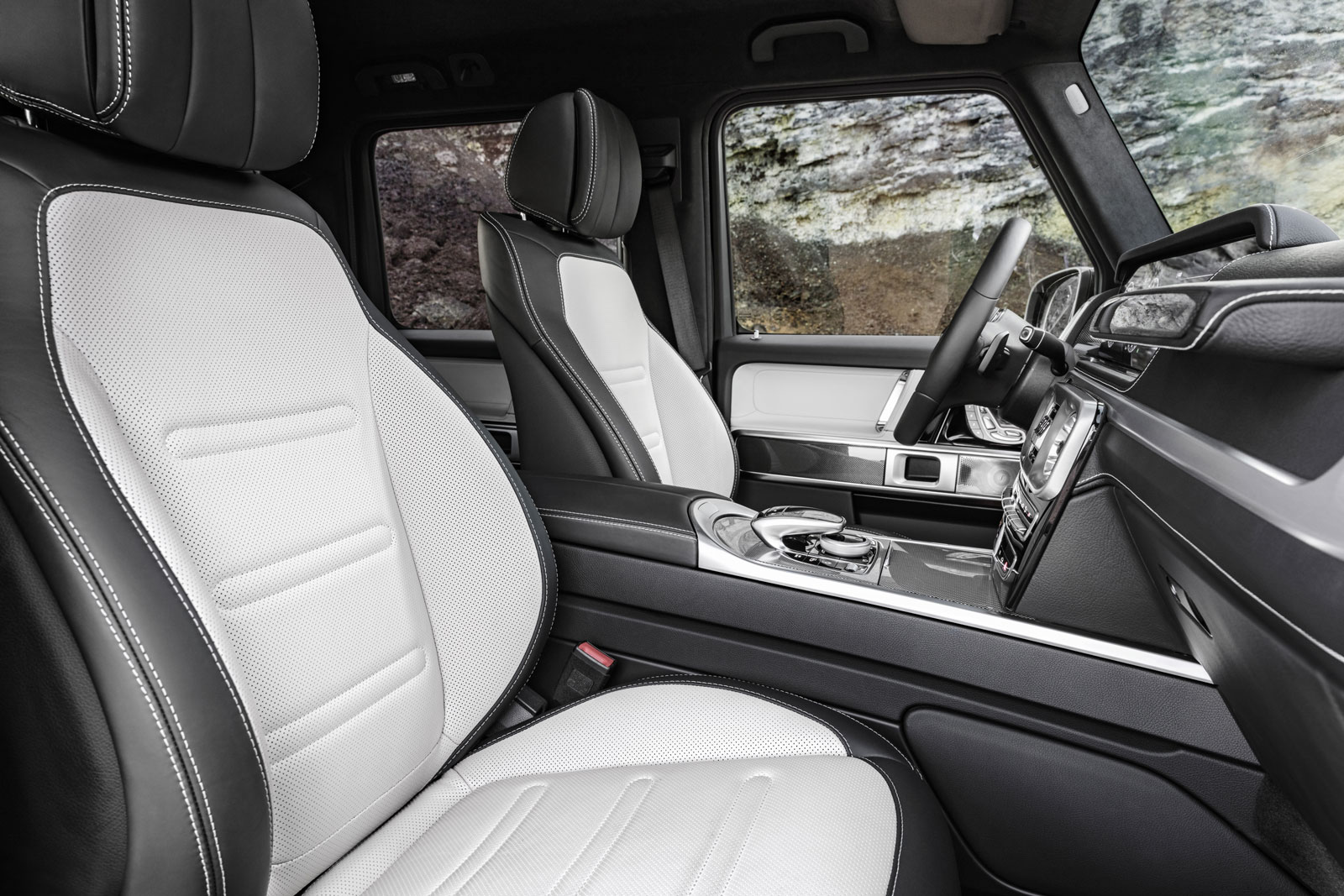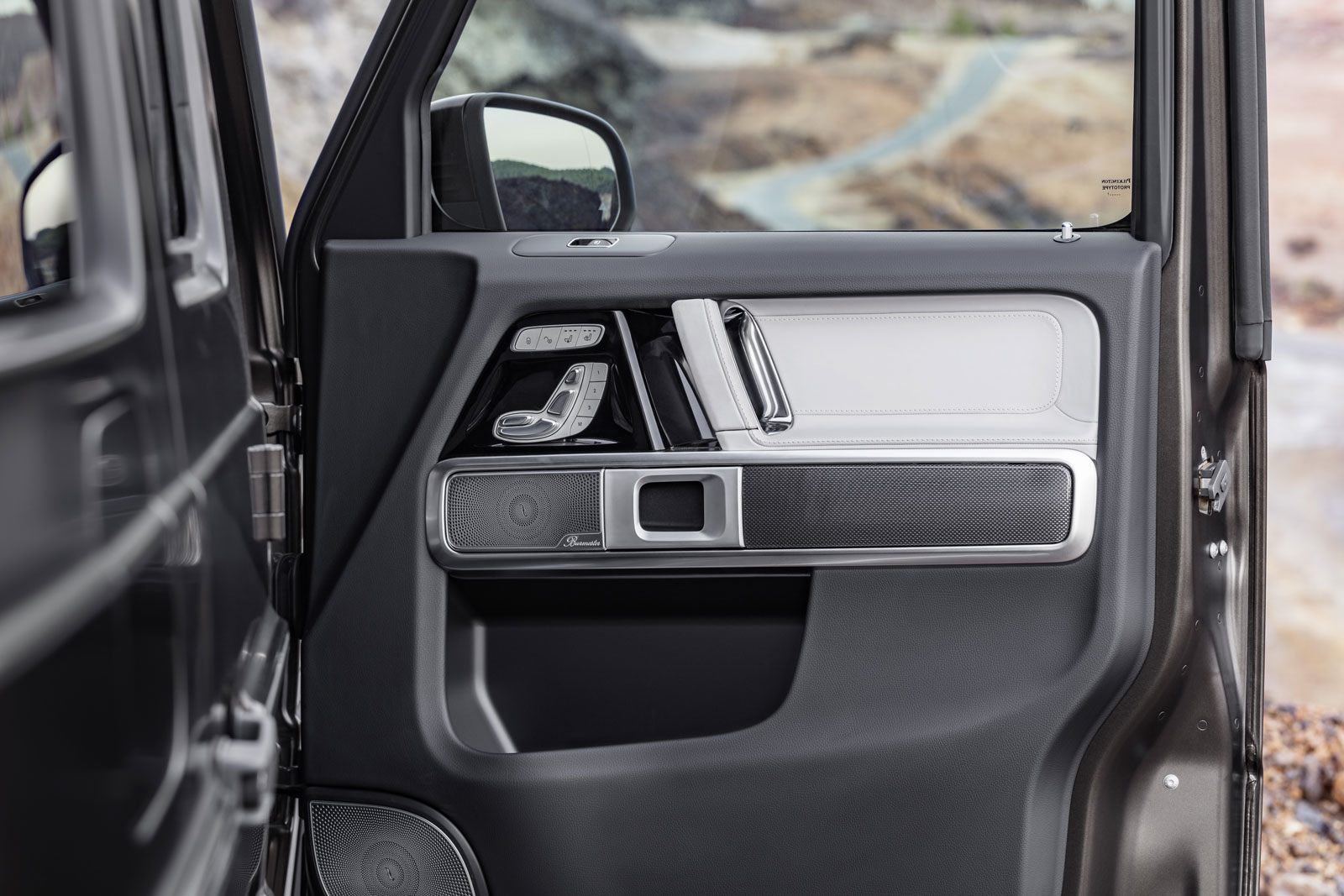Mercedes-Benz has revealed the interior of its new G-Class off-roader, which has undergone the most significant reinvention of its four-decade lifespan to provide greater comfort, technology and usable space for occupants while not abandoning its utilitarian origins.
Full details of the new G-Class - which has been four years in development at Mercedes' standalone G facility in Graz, Austria, and is codenamed 'W464' – will be fully unveiled at the Detroit motor show in mid-January, but the familiar boxy shape of the current vehicle will be retained.
However, the German manufacturer has afforded an early look at the five-seater's interior, where some of the most significant revisions have been made. As well as incorporating much of the technology and underlying electronic architecture from the latest E-Class, Mercedes has retained many of the G-Class's iconic design features. The overhauled G-Class will be wider than the current model, and an increased wheelbase and improved packaging of major components have liberated a considerable amount of additional space inside.

Rear passenger space – an area that was criticised in the current G-Class – is said to have increased by 150mm, with approximately 40mm of that being freed up by a longer wheelbase. The driver and front passenger benefit from an additional 38mm compared with the existing model. Shoulder and elbow room are up by 38mm and 68mm respectively in the front and by 27mm and 56mm respectively for rear occupants.
Although the new G-Class retains its predecessor's upright windscreen and square-jawed proportions, the seating position is slightly more car-like in the new model. "In the outgoing car, it is more like you sit on the car, but now you sit in it," said Oliver Metzger, G-Class design engineering chief.
Very few parts have been carried over from the outgoing G-Class. Among those that do remain are the nozzle of the headlight washer, the cover for the spare wheel – still mounted on the side-hinged rear door – and the door handles.
The influence of Mercedes' saloons can be seen on the dashboard and centre console, most notably on the multi-function steering wheel, which features touch-sensitive controls for the infotainment system, an electric handbrake and the gear selector stalk mounted on the steering column, as opposed to the more traditional gearshift in the centre console.
Mercedes-AMG G-Class gets final hurrah with special editions

It brings the G-Class in line with other Mercedes models equipped with automatic transmissions and opens up space on the centre console for the touchpad and rotary infotainment controller, as well as additional stowage areas. An analogue instrument panel comes as standard, but a 'virtual' display is available as an option.
Design themes from the car's exterior are mirrored inside, said Metzger: "The shape of the air vent is the same as the round headlight sitting in the front grille and the shape of the audio speaker is very similar to the indicator on the front bumper."
The rear seats can be tilted to nine different angles, meaning they can be left upright to optimise stowage space in the boot or reclined for greater rear occupant comfort over long journeys. The rear bench also folds flat to increase the size of the luggage compartment. The current G-Class's luggage capacity of 699 litres with the rear bench up is likely to be surpassed, although Mercedes is keeping the exact figure under wraps until the official reveal next month.
Although the new G-Class will retain its forebears' off-road ability – it has undergone extensive testing on the Schöckl, the gruelling mountain close to the Graz factory – it will also be more luxurious and offer greater potential for personalisation through optional equipment packages and an AMG Line trim level.
Following its Detroit unveiling, the new G-Class is expected to go on sale in Britain next summer at a price slightly above today's entry level of £92,070. The 4x4 enjoyed its most successful year yet in 2016, when almost 20,000 were sold globally.

Why the Mercedes G-Class outlived the Land Rover Defender
Design engineering chief Oliver Metzger on the new Mercedes-Benz G-Class interior
How difficult was it to combine iconic design features within a modern interior?
"It was a tough challenge, but also a fun one. There were not too many trade-offs, where we had to leave out one thing to get the other in. Keeping the iconic features from the current G-Class was the top priority, hence things like the positioning of the three differential lock buttons [on the dashboard]. Older generations of the G-Class had the buttons exactly in this position. And then also the passenger grab handle on the dashboard has been redesigned – it is not only a design feature, it is really necessary when you are off-roading."
How do you go about redesigning a handle?
"It was not a case of copy and paste from the old G-Class. First of all, we had to bring a little bit more to the dashboard than on the old car because of new passenger safety requirements. There was a lot of engineering going on to ensure we could actually keep the handle because it is so iconic for our G-Class. Also behind the dashboard everything is new, so we had to put all the fitment points in different places."
How much of an advantage were the larger interior dimensions?
"We changed the whole ergonomic layout of the car. The old car was limited in terms of how far you could push the front seat backwards. I think almost everybody will find a seating position in which they are comfortable and which is also good for long-distance drives. With the old car, it was almost impossible to access the rear seats. It was very important for us to have enough space in the new G-Class's body-in-white to have easy entry and egress."
More content:
Mercedes-AMG G63 review